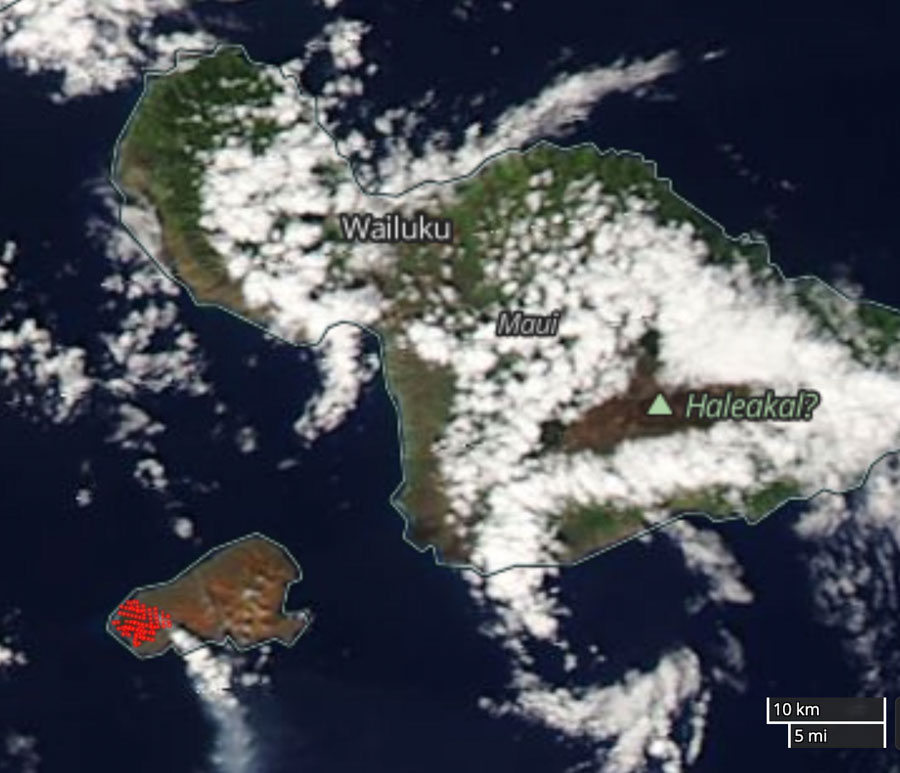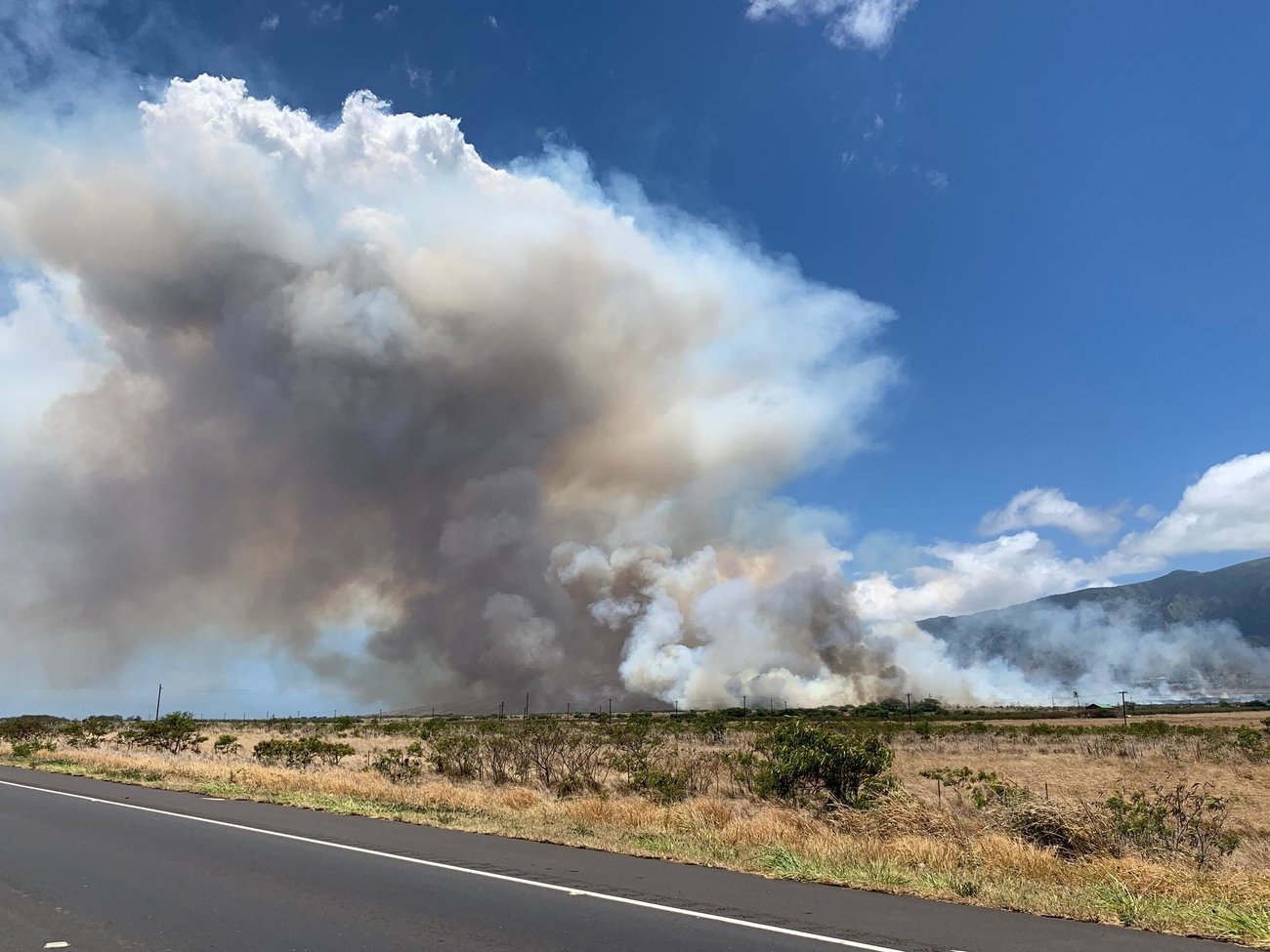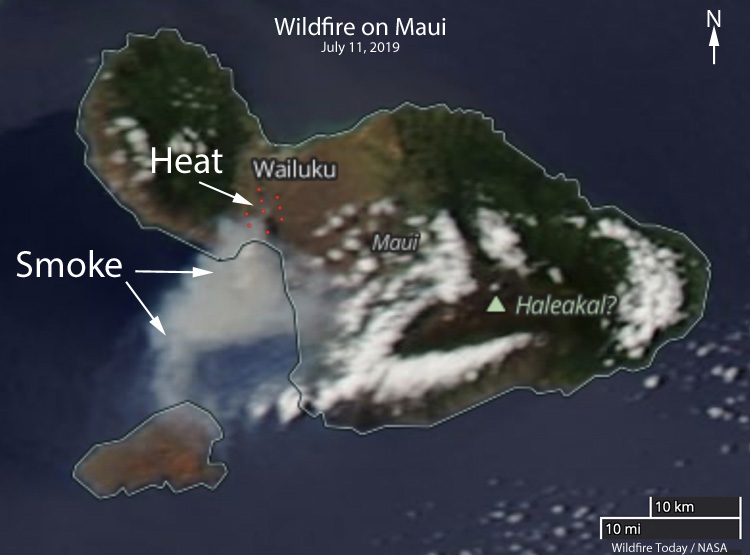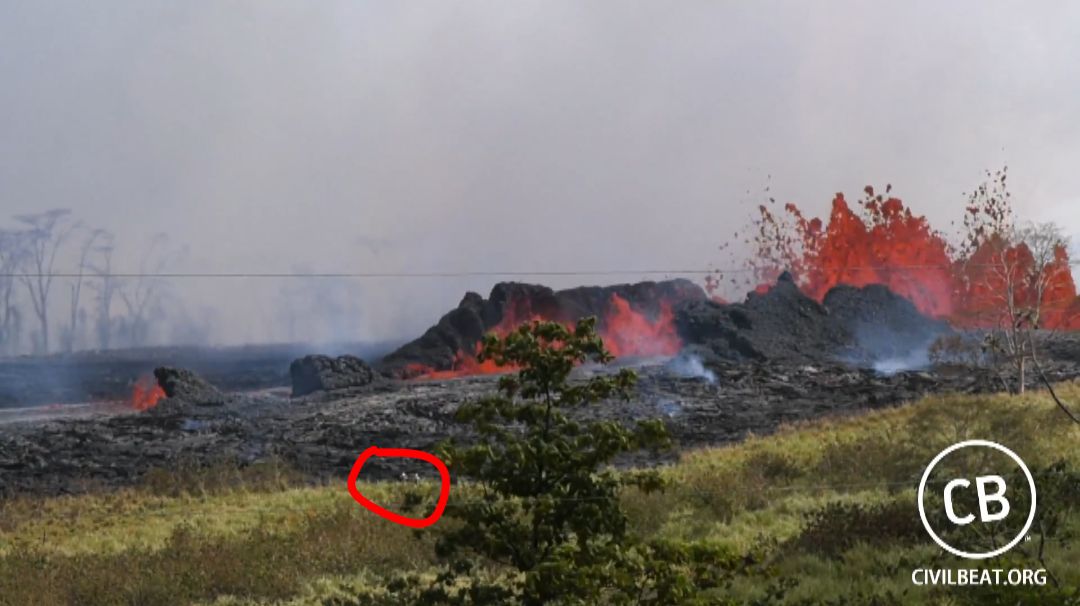
A brush fire on the smallest of the main volcanic islands in the Hawaiian Islands has burned approximately 4,000 acres on Kahoʻolawe southwest of Maui since it was reported Saturday. (UPDATE at 7:02 a.m. MST Feb, 25, 2020: on Monday fire officials said the fire had burned 5,400 acres.)
The island is sacred to the native population, but after the attack on Pearl Harbor in 1941 the island was transformed into a bombing range. Ships fired their big guns at the island and submarines tested torpedoes by firing them at the shoreline cliffs. The weapons testing stopped in 1990 but in spite of removing more than 9 million pounds of unexploded ordnances it is still not safe for firefighters to attempt to suppress fires on the island. That includes ground-based firefighters as well as water-dropping aircraft, said fire officials on Maui.
The most notorious of the weapons tested on the island were the three “Sailor Hat” tests in which 500 tons of TNT were detonated to simulate the blast effects of nuclear weapons on shipboard weapon systems.
Air Tanker 911, a DC-10, left Richmond, Australia Monday afternoon U.S. time en route to the U.S. and within the next 24 hours will likely refuel in Hawaii. If it wasn’t for the danger of the fire burning through unexploded ordnances, it would be a rare opportunity for a Very Large Air Tanker to drop on a fire in Hawaii.






